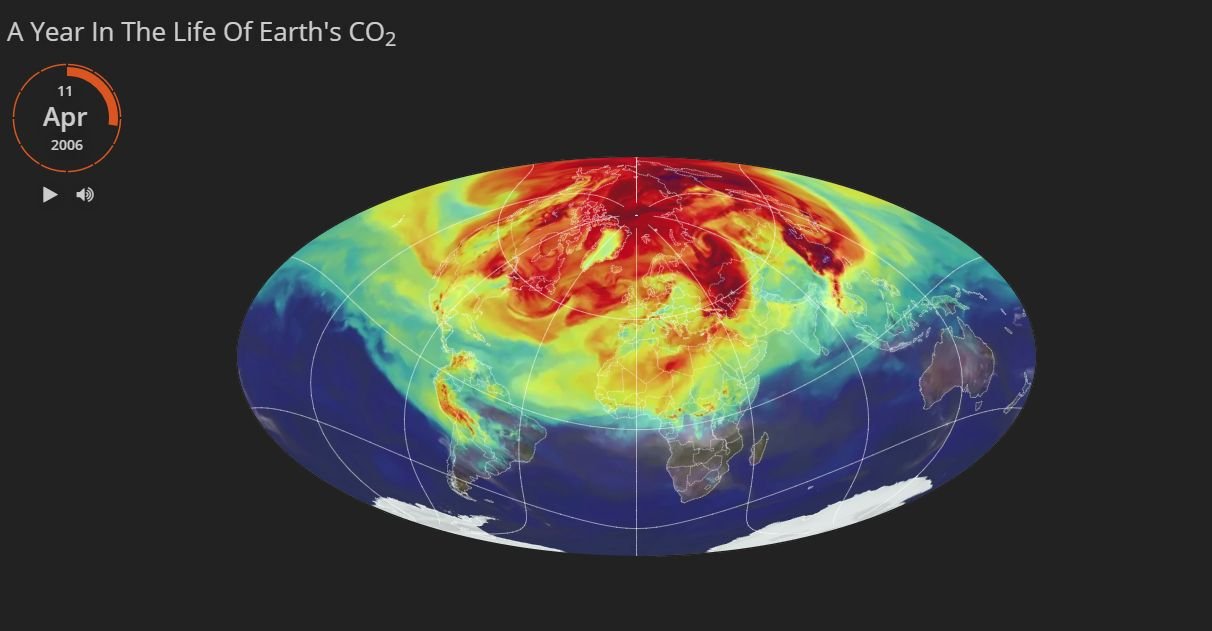Here’s what a year in the life of earth’s CO2 looks like

It's obvious to suggest the world's carbon dioxide emissions change with the seasons – but what does that look like?
The Cartography and Geovisualisation Group at Oregon State University and NASA has crunched one year's worth of data to show us how carbon dioxide swirls around the atmosphere over the course of four seasons.
The interactive video map is part of a simulation called "Nature Run", which uses data on atmospheric conditions and the emission of greenhouse gases. The model is then is left to run on its own and simulate the natural behaviour of the earth’s atmosphere.
"While the presence of carbon dioxide has dramatic global consequences, it's fascinating to see how local emission sources and weather systems produce gradients of its concentration on a very regional scale," Bill Putman, a scientist at NASA, said.
"Simulations like this, combined with data from observations, will help improve our understanding of both human emissions of carbon dioxide and natural fluxes across the globe."
Here are a couple of screenshots – you can watch the full visualisation here.

(Source: Carto Group and NASA)
The visualisation shows high concentrations of CO2 emissions are mainly found in the Northern hemisphere. What's more they cluster around major regions – such as North America, Europe and Asia.
You can also see how big weather patterns – such as the climate signal El Niño which comes about just two or three times in a decade – push the plumes of pollution around the earth's atmosphere.

(Source: Carto Group and NASA)
But during the milder seasons of spring and summer, more green plants absorb CO2 through photosynthesis, removing it from the atmosphere. This can be seen in the visualisation by a reduction of red and purple tones.
At the same time, it starts to get slightly colder in the southern hemisphere, leading more people to light fires in Africa, South America and Australia. This pushes carbon monoxide – another pollutant – into the earth's atmosphere, which is demonstrated by the grey shades which have emerged on the map.